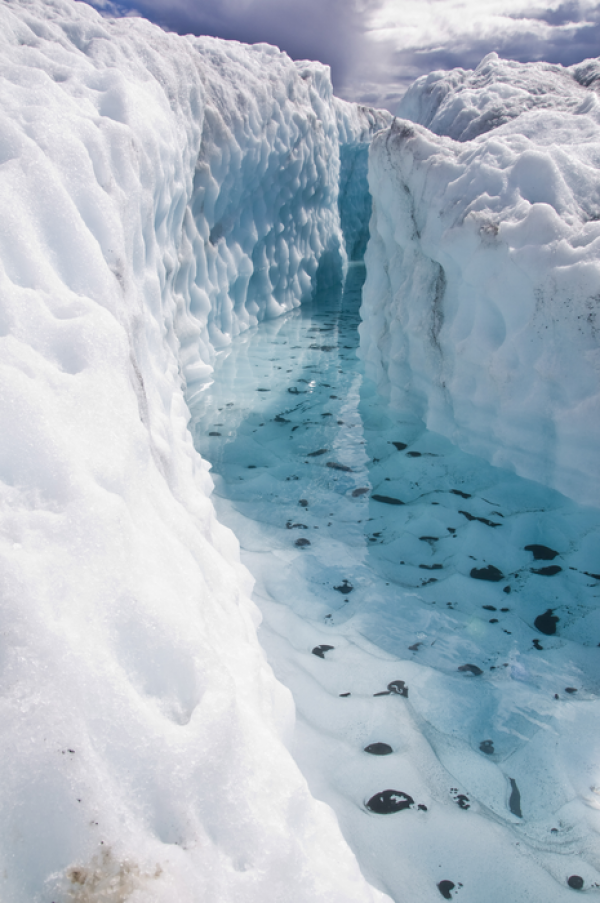As climate change warms the planet, glaciers are melting faster, and scientists fear that many will collapse by the end of the century, drastically raising sea level and inundating coastal cities and island nations.
A University of California, Berkeley, scientist has now created an improved model of glacial movement that could help pinpoint those glaciers in the Arctic and Antarctic most likely to rapidly slide downhill and fall into the ocean.
The new model, published last week in the journal The Cryosphere, incorporates the effects of meltwater that percolates to the base of a glacier and lubricates its downhill flow. The new physical model predicts that the most vulnerable glaciers are the thickest ones that have a history of faster flow, even when that rapid flow is periodic.
“The model suggests that thick and fast-flowing glaciers are more sensitive to lubrication than thin and slow glaciers,” said Whyjay Zheng, a postdoctoral fellow in the UC Berkeley Department of Statistics. “The data from Greenland glaciers support this new finding, indicating that those fast and thick glacier beasts might be more unstable than we thought under global warming.”
Read more at University of California - Berkeley
Image: A pool of meltwater in a crevasse in an Alaskan glacier. Though ice-cold, these pools of water can melt the underlying ice and punch all the way through the glacier, draining to bedrock and lubricating a glacier’s downhill flow, facilitating rapid collapse and sudden sea level rise. (Credit: Whyjay Zheng, UC Berkeley)


